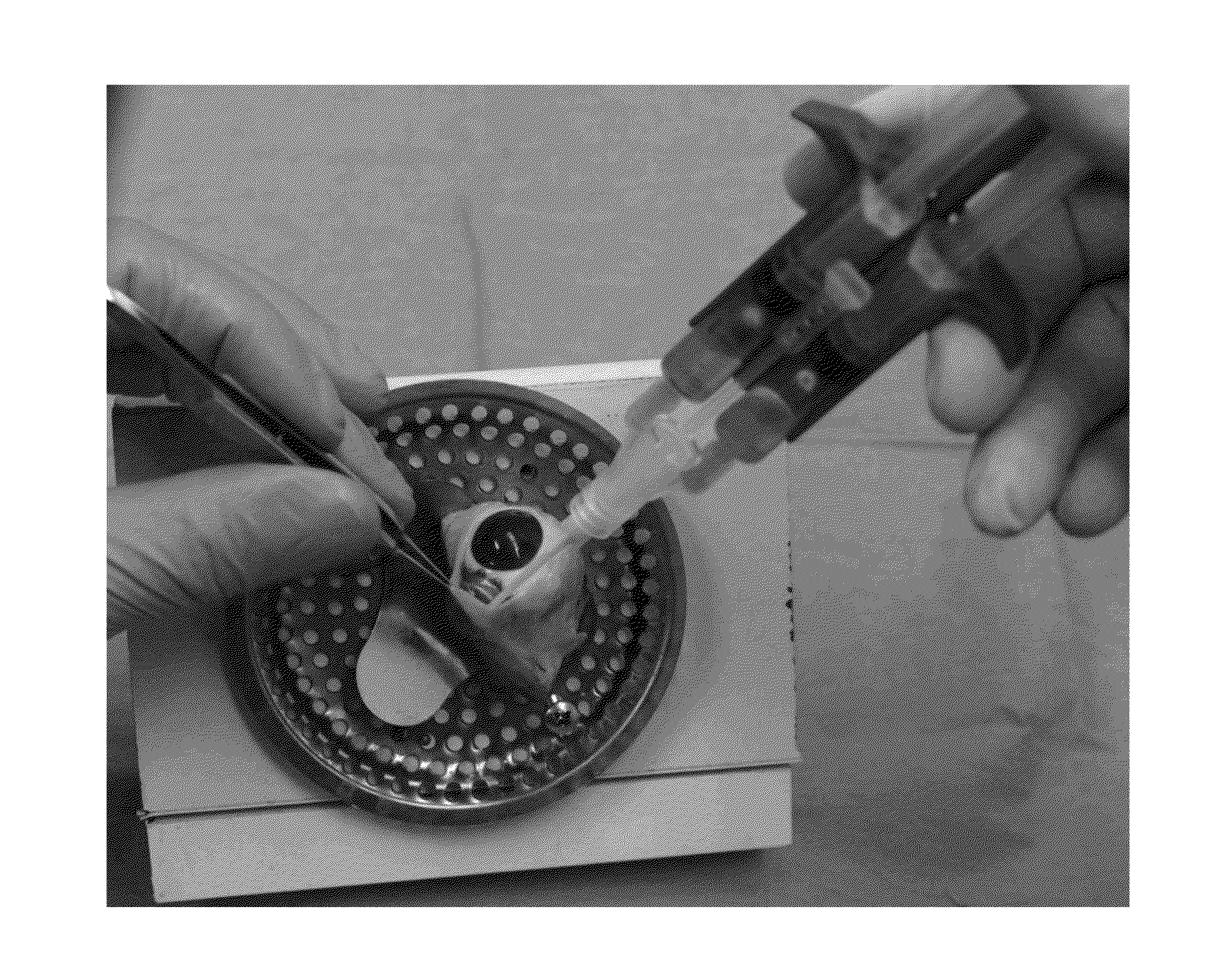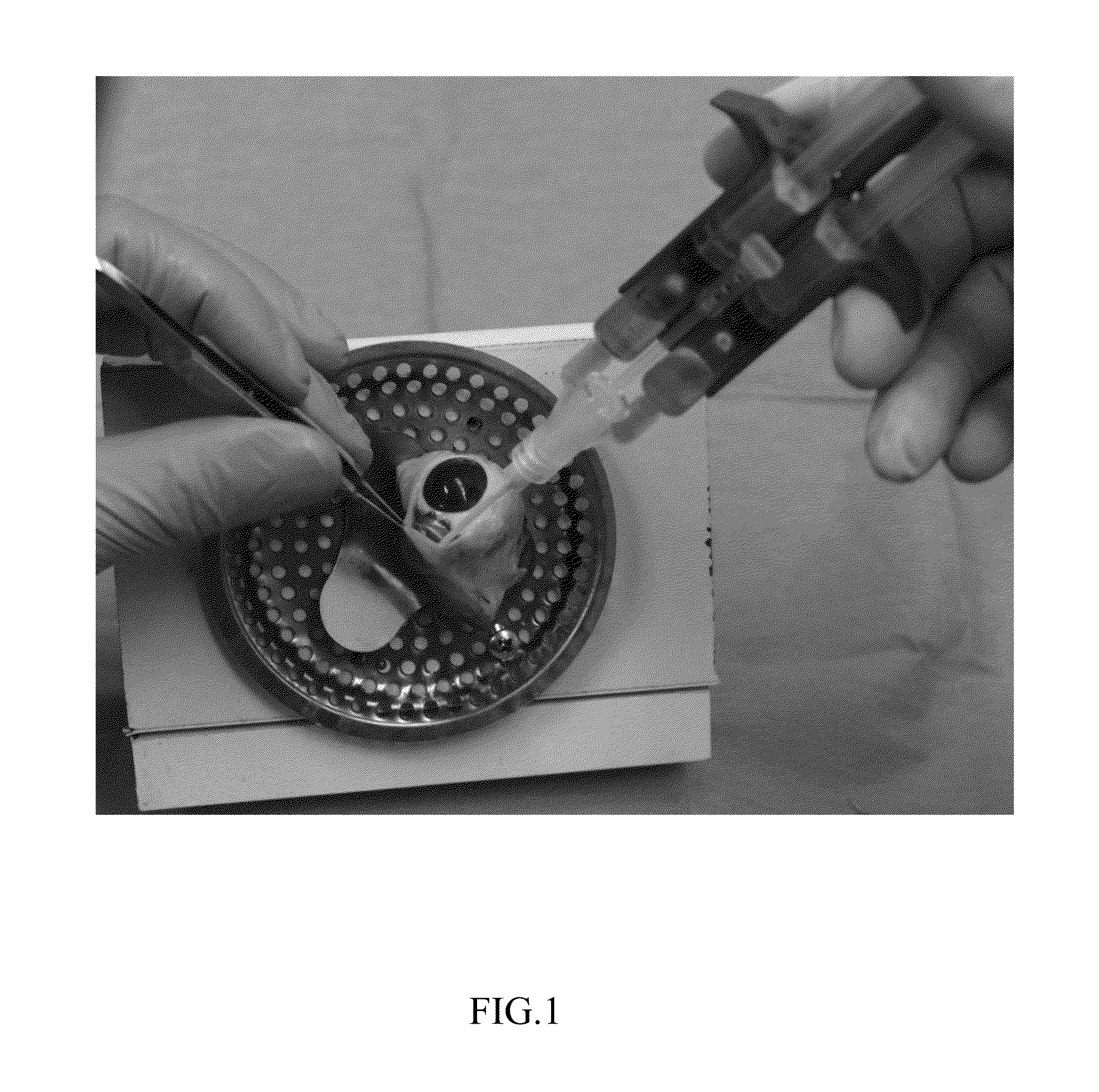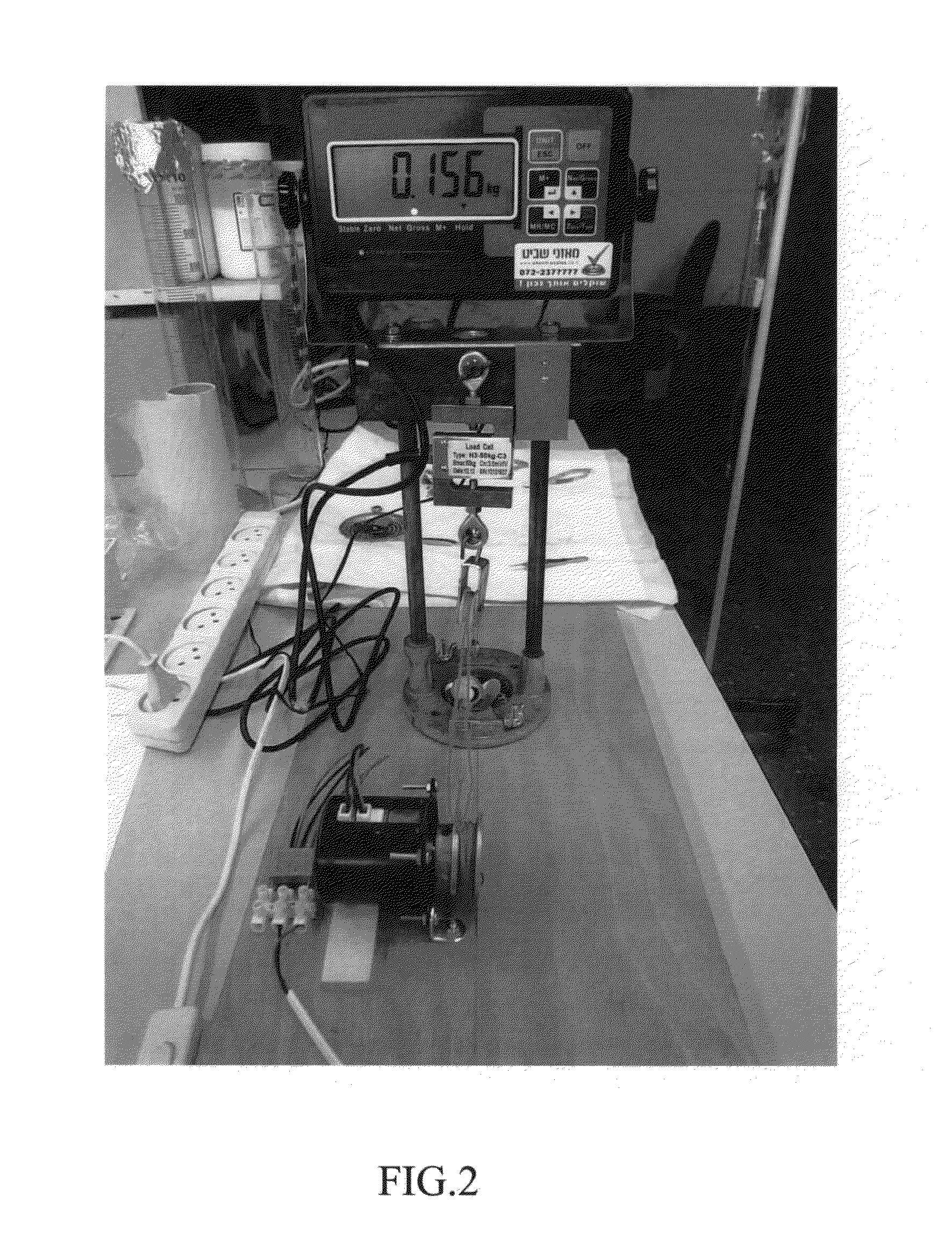Methods and kits for reversible adhesion of implants to an eye sclera
a technology of implant and eye sclera, which is applied in the direction of radiation therapy, medical devices, enzymes, etc., can solve the problems of affecting the effect of sclera, and difficulty in finding and removing sutures, so as to achieve accurate placement of implants, no tilting, and easy removal of implants
- Summary
- Abstract
- Description
- Claims
- Application Information
AI Technical Summary
Benefits of technology
Problems solved by technology
Method used
Image
Examples
example 1
Fibrin Glue is Able to Strongly Affix a Plaque to the Sclera of an Eye in-vitro
[0134]In order to test whether fibrin glue may be used for affixing a plaque to the sclera of an eye, extracted porcine eyes were used. The porcine eyes were enucleated from 6 month old (weight ˜90 Kg) domesticated pigs. The eyes were eviscerated through an 180°-270° corneo-limbal incision, filled with glass beads and sutured with a 5 / 0 prolen suture in order to maintain a constant intraocular pressure. The eyes were then anchored to a stainless steel perforated cover using 3 / 0 silk sutures (full thickness through the conjunctiva and sclera). The cover was attached to a vertical stand to simulate a supine lying patient.
[0135]In five of the examined eyes, 12 mm COMS-style gold plaques without radioactive seeds (Eckert & Ziegler BEBIG, Berlin, Germany) were affixed to the sclera using 5 / 0 nylon sutures through eyelets 1, 3 and 5 followed by closure of the conjunctiva using vicryl 7 / 0 sutures, as known in th...
example 2
Plasminogen Activator Facilitates Detachment of a Plaque Affixed to a Sclera of an Eye through Fibrinogen Glue
[0141]In order to examine whether a plasminogen activator is able to facilitate detachment of a plaque affixed to a sclera through fibrinogen glue, six extracted porcine eyes were used. The eyes were prepared as described in Example 1, followed by affixing 12 mm COMS-style gold plaques (Eckert & Ziegler BEBIG, Berlin, Germany) to the eyes as described for the group treated with fibrin glue and conjunctiva in Example 1. Administration of the fibrin glue on the gold plaques is demonstrated in FIG. 1. The eyes with the affixed plaques were then incubated in plasma (MDAIS, Ramat Gan, Israel) for 3 days (72 hours) at room temperature to simulate a fibrinolytic environment (the plasma was replaced every 36 hours).
[0142]In order to examine whether a composition containing a plasminogen activator is able to detach the affixed plaques, three eyes were treated with 10 ml of Normal Sal...
example 3
Fibrin Glue is Able to Affix a Plaque to the Sclera of a Human Eye in-vitro
[0144]A section of a human sclera, derived from a donor, was placed in a petri dish and a 16 mm gold plaque (without radioactive seeds) has been placed on the sclera. Next, 2 ml of fibrin-glue components (Evicel, Johnson&Johnson) were dripped on the plaque such that the excess glue spilled on the sclera and petri dish. After approximately 1 minute, once the fibrin glue has set, the sclera-plaque-glue complex was covered in plasma to simulate a fibrinolytic environment, and incubated for three days as described in Example 2. The plaque remained strongly bound to the sclera after three days of incubation. Next, 10 ml of Urokinase solution, as described above, was applied on the hardened fibrin glue. The fibrin glue broke down within 2-3 minutes, enabling extraction of the plaque from the eye.
PUM
| Property | Measurement | Unit |
|---|---|---|
| time | aaaaa | aaaaa |
| diameter | aaaaa | aaaaa |
| time-period | aaaaa | aaaaa |
Abstract
Description
Claims
Application Information
 Login to View More
Login to View More - R&D
- Intellectual Property
- Life Sciences
- Materials
- Tech Scout
- Unparalleled Data Quality
- Higher Quality Content
- 60% Fewer Hallucinations
Browse by: Latest US Patents, China's latest patents, Technical Efficacy Thesaurus, Application Domain, Technology Topic, Popular Technical Reports.
© 2025 PatSnap. All rights reserved.Legal|Privacy policy|Modern Slavery Act Transparency Statement|Sitemap|About US| Contact US: help@patsnap.com



